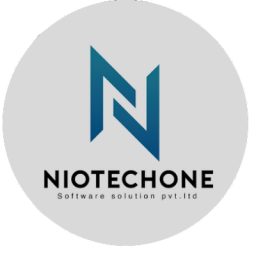
Introduction
In the evolving landscape of web development, front-end architecture has undergone a massive transformation. Traditional monolithic front-end systems are no longer sufficient to support modern, scalable, and modular applications. Businesses today require more agile, maintainable, and independently deployable systems. Enter micro frontends — a paradigm inspired by the principles of microservices, now applied to the user interface.
For an ASP.NET developer or a seasoned .NET developer, understanding and implementing micro frontends using ASP.NET Core is a game-changer. This architectural approach not only improves team productivity and scalability but also simplifies deployment and future upgrades.
In this comprehensive blog post, we’ll explore how micro frontends solve the limitations of monolithic UI architectures, why ASP.NET Core is a powerful back-end partner for micro frontends, and how you can build scalable applications that align with modern software development practices.
What Are Micro Frontends?
Micro frontends refer to a design approach where a front-end application is broken down into smaller, manageable, and independent pieces—just like microservices for the backend. Each “micro frontend” represents a self-contained feature or domain, developed and deployed independently.
Key Characteristics:
Decentralized development: Each team owns and builds their micro frontend.
Technology agnostic: Different micro frontends can be built using different frameworks (React, Angular, Vue, etc.).
Independent deployment: Each part can be deployed without affecting others.
Modular structure: Easier to scale and update features.
Challenges with Monolithic Frontends
A traditional monolithic frontend may be manageable at first, but as an application scales, problems arise:
1. Tight Coupling
All features are interdependent, making updates risky and complex.
2. Slower Deployment Cycles
Even a small UI change requires deploying the entire application.
3. Team Bottlenecks
Multiple teams working on the same codebase often lead to merge conflicts, code ownership issues, and delays.
4. Scaling Limitations
Monolithic apps become harder to scale both technically and organizationally.
For teams engaged in software development at scale, especially using Microsoft technologies, moving to micro frontends can dramatically enhance agility and resilience.

Why ASP.NET Core for Micro Frontends?
As a modern, high-performance framework, ASP.NET Core offers several advantages for building the backend layer that supports micro frontends:
Lightweight and cross-platform
Built-in support for API-first architectures
Excellent integration with modern SPA frameworks
Flexible routing and reverse proxy capabilities
Seamless support for Docker and Kubernetes
For any ASP.NET developer, these features make ASP.NET Core an ideal backend for micro frontend orchestration and service communication.
Architecture Overview
Let’s break down a typical micro frontend architecture using ASP.NET Core as the backend orchestrator.
Components:
Micro Frontends
Developed independently (React for payments, Angular for order history, Vue for user profiles)
Packaged as web components or separate SPAs
Can be hosted on CDNs or microservices
Container App (Shell or Host App)
Responsible for layout and routing between micro frontends
Can be a basic SPA or MVC Razor Pages app
ASP.NET Core Backend
Acts as a gateway
Manages authentication, routing, and API aggregation
Uses tools like YARP (Yet Another Reverse Proxy) or Ocelot
How to Build Micro Frontends with ASP.NET Core
Let’s walk through the process of building a basic micro frontend architecture using ASP.NET Core.
1. Create Independent Micro Frontends
Build each feature/module in isolation.
Choose your desired tech stack (React, Angular, Vue, Blazor).
Deploy each to a different route or subdomain.
2. Create a Container App
Use ASP.NET Core MVC or Razor Pages for the layout and shell.
Load micro frontends dynamically using
<iframe>, module federation, or client-side routing.
html
CopyEdit
<div id="payment-module">
<iframe src="https://payments.example.com" frameborder="0"></iframe>
</div>
3. Configure Routing in ASP.NET Core
Use YARP or middleware to reverse proxy micro frontends.
csharp
CopyEdit
app.UseRouting();
app.UseEndpoints(endpoints =>
{
endpoints.MapReverseProxy();
});
YARP (Yet Another Reverse Proxy) is an open-source project supported by Microsoft that simplifies microservice and frontend routing.
4. Authentication & Authorization
Centralize your authentication in ASP.NET Core and share tokens with micro frontends via headers or cookies. IdentityServer or Azure AD B2C can be used for identity federation.
Advanced Patterns
Module Federation
Webpack 5’s Module Federation allows dynamic loading of frontends at runtime, enabling shared dependencies and lazy loading.
Micro Frontends in the Cloud
Deploying micro frontends using Azure App Services, Azure Front Door, or Kubernetes Ingress Controllers allows seamless scaling and global distribution.

Testing Micro Frontends
Use Jest, Cypress, or Playwright for UI testing.
Test each micro frontend independently before integration.
Benefits for ASP.NET Developers and .NET Development Teams
Implementing micro frontends provides tangible advantages, especially for ASP.NET and .NET teams involved in enterprise-scale software development:
Modular Development
Teams can own and deliver end-to-end features with minimal cross-team dependencies.
Faster Deployments
Bug fixes or enhancements to one module don’t require full redeployment.
Technology Flexibility
Teams can choose the best frontend technology without being tied to a single stack.
Scalable Teams
Perfect for scaling development across distributed or offshore teams.
Improved Maintainability
Smaller codebases reduce technical debt and allow for faster onboarding of new .NET developers.
Common Pitfalls to Avoid
Over-Fragmentation
Don't over-divide modules. Keep domains cohesive.Inconsistent UI/UX
Use a shared design system or component library.Complex Deployment Pipelines
Automate with CI/CD (Azure DevOps or GitHub Actions) and ensure module versioning.Redundant Code
Use shared packages for common utilities and styles.
Real-World Use Case
A financial services company migrated from a large Razor Pages app to a micro frontend architecture:
Auth module in Angular
Trading dashboard in React
Admin panel in Blazor
Using ASP.NET Core as the orchestrator, the company saw a 40% reduction in deployment time, 50% fewer frontend bugs, and a 25% increase in developer productivity.
For their growing .NET development team, it brought clarity, faster onboarding, and better domain ownership.
Conclusion
Micro frontends offer an elegant and powerful solution to the scalability challenges of monolithic front-end architectures. For an ASP.NET developer or .NET developer, understanding how to integrate micro frontends with ASP.NET Core can drastically enhance your capabilities and career prospects.
By combining modular frontends with a modern .NET backend, your software development team can build systems that are easier to maintain, scale, and evolve.








Write a comment ...